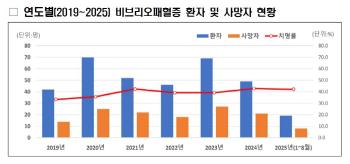170,000 people at risk of dying alone nationwide, which is different from the actual death statistics...Active administration of local governments is important
Sep 16, 2025
|
The number of deaths from loneliness is increasing every year to 3,279 in ▲ 2020, 3,378 in ▲ 2021, 3559 in ▲ 2022, and 3,661 in ▲ 2023.
According to the Statistics Korea's '2024 statistics on single-person households', the total number of single-person households in 2023 was 7,829,000, accounting for 35.5% of all households. Looking at the total number of single-person households by age group, 19.1% of those aged 70 or older accounted for the largest share, beating those under 29 (18.6%). It was followed by those in their 60s (17.3%) and those in their 30s (17.3%).
As the number of lonely deaths due to aging and an increase in single-person households increases, social support is required. In this regard, 179,938 people were classified as people at risk of dying alone across the country last year.
According to the data submitted by Rep. Seo Mi-hwa (Democratic Party of Korea), a member of the National Assembly's Health and Welfare Committee, from the Ministry of Health and Welfare, ▲ Seoul 31.1% (53,136), ▲ Gwangju 17.6% (31,159), ▲ Busan 9.5% (16,237), ▲ Incheon 9.2% (15,880), ▲ Gyeonggi 6.4% (18,883), ▲ Daegu 5.0% (8599), ▲ Chungnam 4.0% (6763), ▲ Jeonbuk 2.6% (4410).
This is the first time that a nationwide survey of people at risk of loneliness has been conducted. However, this distribution of risk persons was different from the actual statistics of lonely deaths.
In fact, according to the statistics of deaths from loneliness between 2020 and 2023, ▲Gyeonggi 22.1% (3062), ▲Seoul 17.5% (2427), ▲Busan 9% (1248), ▲Gyeongnam 6.6% (920) and ▲Incheon 6.6% (919) were counted, showing a gap from the distribution of dangerous people. Critics point out that this is the result of reflecting differences in the discovery and management systems of each local government.
In order to prevent lonely deaths, the government began the 'Solitary Death Prevention Pilot Project' in 39 cities and counties from August 2022, and expanded the project to 229 cities and counties nationwide from July 2024. This year, it is promoting the establishment of a 'single death crisis response system', and from next year, it will be possible to analyze statistics by age and gender and track case management history through system computerization.
Representative Seo Mi-hwa said, "The scale of excavation of people at risk of lonely deaths varies depending on how much the local government conducts the 'active administration'.""The local government should actively identify dangerous people to the point where it feels excessive, and the government should quickly complete the computerization of the system to prevent welfare blind spots from occurring."," he stressed.
This article was translated by Naver AI translator.














